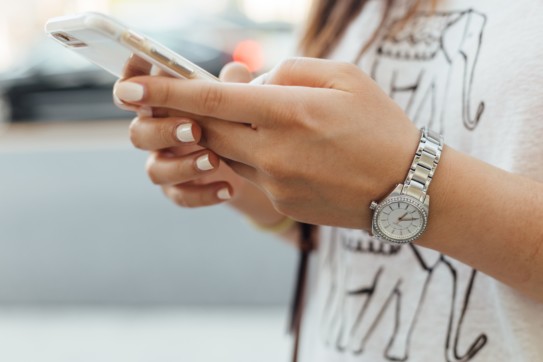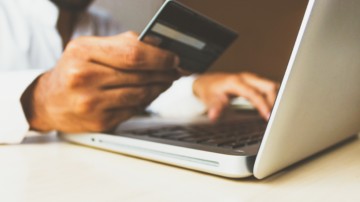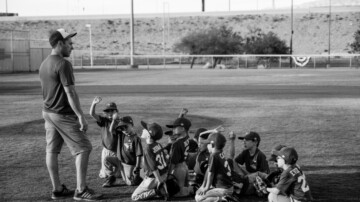How Susan G. Komen Engaged New Audiences Using Custom Messaging

Are you looking for new ways to raise funds and engage new audiences? Explore this recap of Susan G. Komen’s efforts and tips for your next fundraiser.
Nonprofits everywhere felt the squeeze at the start of the pandemic. Fundraising dipped or was otherwise diverted to organizations with an immediate need, such as those responding to COVID-related missions.
Susan G. Komen found that many peer-to-peer fundraiser participants were resistant to ask their friends and family to donate to a cause they supported during the pandemic, a time when many were facing financial and personal hardship. Because of this, Komen’s Facebook fundraising revenue was down 40% at the outset of COVID-19.
But, the need for breast cancer research and support services didn’t stop just because there was a global crisis. So, just as your organization likely did as well, Susan G. Komen sought out ways to connect with new supporters and grow its fundraising base.
Komen partnered with GoodUnited, a provider of social fundraising solutions, to create new, innovative peer-to-peer fundraising challenges and custom, conversational messaging sequences that both raised revenue and built Komen’s relationships with a new audience.
In this guide, we’ll walk through the process that Komen used, as well as the fundraising and audience growth results. We’ll cover the following points:
- Step 1: Create a Facebook challenge.
- Step 2: Engage supporters in Facebook groups.
- Step 3: Use custom messaging sequences to steward challenge participants.
By the end of this guide, you should have everything you need to incorporate Facebook challenges and custom, conversational messaging into your strategy. Let’s get started.
Step 1: Create a Facebook challenge.
Before you can engage new supporters with custom messaging, you first need to open the door for these communications to occur.
Susan G. Komen did this with a set of Facebook challenges. A Facebook challenge is a time-bound peer-to-peer fundraiser conducted using the social network’s fundraising tools. During this fundraiser, participants group together online, complete a task (such as walking a specific number of steps or completing some other physical activity), and raise peer-to-peer funds from their personal networks using a Facebook fundraiser.
These fundraisers brought together a group of like-minded individuals— Komen’s supporters— to complete a quick, fun task together while raising funds for a cause they care about. For Komen, this was an additive fundraising method that was ideal for supplementing their ongoing efforts.
To emulate this approach at your organization, here are the steps for planning a Facebook challenge:
- Outline the parameters for your campaign. This includes the challenge dates (often two weeks to a month) and the activity that participants will complete. For example, you may host a month-long fundraiser in which participants are challenged to walk 10K steps per day. Susan G. Komen hosted a burpee fitness challenge. For inspiration, check out this GoodUnited guide to peer-to-peer fundraising ideas, which explores more than 20 ideas to kickstart your challenge.
- Create a corresponding Facebook group and ad campaign. Once you’ve outlined the parameters, create a Facebook group that all challenge participants will join. Additionally, create a targeted Facebook ad campaign that invites participants to join the challenge and corresponding group. You’ll want to target these ads toward individuals who are in your nonprofit’s general social network, such as those who “like” your Facebook page, even if they haven’t directly given to your nonprofit just yet.
Once you’ve laid the foundation for your challenge fundraiser and participants have started to join in, you can move to the second step of this guide— engaging the challenge participants in the Facebook groups you’ve created.
Step 2: Engage supporters in Facebook groups.
Once participants have signed up for the Facebook challenge, joined the corresponding group, and created their own Facebook fundraisers, the fun begins.
Susan G. Komen set out to have 6,000 people join its challenge Facebook group. The results were more than double this number, with 13,000 people (about 90% of whom were new to the organization) joining. This group then effectively functions as a community for all participants, who can:
- Encourage one another to reach both their fitness and fundraising goals.
- Make donations to and otherwise boost one another’s fundraisers.
- Be motivated by one another’s hard efforts, both fundraising and physically.
- Explore additional resources shared by your nonprofit, whether about your cause, fundraiser, or additional opportunities.
These groups not only begin building connections between supporters and your organization, but they also drive these participants toward successfully reaching their fundraising goals. Plus, because you’ve created the group and own it, you can monitor the conversations to ensure everything shared is wholesome and aligned with your nonprofit’s branding.
“This was a way to build a meaningful community in the digital world among people touched by a cause or a diagnosis, during a time when we were living apart and unable to connect in-person,” said Michelle Strong, vice president of marketing strategy at Komen.
The effects of this strategy are clear: not only did Komen engage with more participants than expected, but they also raised 2x the donations than they had originally anticipated. To read more about the nonprofit’s specific results, explore the Susan G. Komen success story here.
Step 3: Use custom messaging sequences to steward challenge participants.
At this stage, the challenge is in full swing. While participants may be moving steadily toward their goals, that doesn’t mean that your work is finished. Now, the door is open for you to use custom messaging sequences to capture and retain these participants as meaningful supporters of your cause for years to come.
Begin by inviting challenge participants to connect with your nonprofit via Facebook Messenger— similar to how they would with a friend or family member on the platform. Then, hold one-on-one conversations with each participant that are tailored to that individual’s needs. You can share:
- Questions and surveys to learn more about the supporter. For example, how can you contact them in the future with additional opportunities? What inspired them to fundraise for your cause? What types of opportunities would they like to be involved with in the future?
- Gratitude and encouragement to motivate participants toward their goals. Fundraising can be a challenge— especially if you’re not a trained nonprofit professional. With regular encouragement and gratitude, you can motivate the participant to persevere toward their goal.
- Fundraising tips and best practices. As a nonprofit professional, you have a wealth of information regarding the best practices to actually reach a fundraising goal. Share this information with challenge participants! For example, you might encourage them to make the first donation themselves, share a personal story on their fundraising pages, and regularly promote the effort on their timelines. These tips will all help them successfully complete the challenge.
You may be wondering how it’s possible to hold meaningful conversations with each challenge participant, especially if you have 13K participants like Komen did. Komen was able to use automated, custom messaging sequences to scale up conversational messaging in an efficient manner. These sequences were tailored to Komen’s brand and goals, asking questions about who the supporter was raising funds on behalf of and collecting additional contact information. They were also adaptive, meaning they were able to adjust depending on how the user responded to various prompts.
The Facebook challenge could have ended with plenty of funds raised, but only a few lasting connections. However, because of this custom messaging sequence, the challenge ended with Komen adding ten thousand new supporters to its email file for future engagement down the line.
We’ve found Messenger to be especially effective, with a 94% open rate (compared to the average email open rate of 15%) and a 60% click-through rate for shared links. And, if you want to use a combination of email and messaging, you can easily do so by asking for the email addresses of your Messenger connections.
Susan G. Komen had major success using Facebook challenges and custom messaging sequences to understand, inspire, and grow its relationships with the next generation of social supporters. Despite the pandemic’s challenges, Komen more than doubled its participation and fundraising goals— and, you can too!
Use the tips in this guide to get started, and consider partnering with a social fundraising services provider to scale up your efforts in a sustainable way. Good luck!



